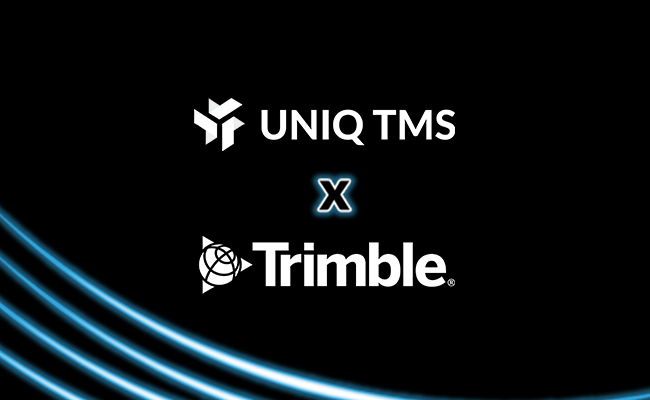
Managing the logistics of transportation can be a complex and costly endeavor for businesses. However, with the advent of Transportation Management Systems (TMS), companies now have the opportunity to streamline their operations, reduce costs, and improve overall efficiency. But before implementing any new software solution, it is crucial to understand the basics of TMS and how it can have a significant impact on your organization’s financial health.
Understanding the Basics of TMS
What is TMS?
Transportation Management System (TMS) refers to a software platform that helps businesses optimize their transportation operations. It encompasses various functionalities, including route planning, load optimization, carrier selection, shipment tracking, and freight payment.
Implementing a TMS can revolutionize the way a company manages its transportation processes. By leveraging advanced algorithms and data analytics, TMS enables businesses to make informed decisions in real-time, leading to enhanced operational efficiency and customer satisfaction. Furthermore, TMS solutions are scalable and customizable, catering to the unique needs of different industries and supply chain models.
Key Features of TMS
A robust TMS provides businesses with a wide range of features and benefits. Some key features include:
- Automated order management
- Real-time visibility and tracking
- Carrier selection and rate management
- Optimized route planning
- Freight consolidation
Moreover, TMS offers integration capabilities with other systems such as Enterprise Resource Planning (ERP) software and Warehouse Management Systems (WMS), creating a seamless flow of information across the entire supply chain. This integration streamlines processes, minimizes manual interventions, and improves data accuracy, leading to better decision-making and cost savings. Additionally, TMS solutions often come with robust reporting and analytics tools that provide valuable insights into transportation performance, helping businesses identify areas for optimization and continuous improvement.
The Financial Implications of TMS
Initial Investment in TMS
Implementing a Transportation Management System (TMS) involves a certain initial investment, including software licensing and integration costs. Organizations need to carefully evaluate the costs involved in customizing the TMS to suit their specific logistics needs. This customization may include integrating the TMS with existing ERP systems, carrier networks, and order management platforms, which can add to the initial investment but ultimately lead to a more streamlined and efficient supply chain process.
Furthermore, it is crucial for businesses to consider the potential return on investment (ROI) that a TMS can offer. By automating manual processes, optimizing route planning, and improving freight visibility, a TMS can help reduce transportation costs, minimize errors, and enhance overall operational efficiency.
Ongoing Costs of TMS
Aside from the initial investment, businesses should also factor in the ongoing costs associated with maintaining and supporting the TMS. These ongoing expenses may include software updates to ensure compliance with industry regulations and security standards, as well as regular training sessions to keep employees up-to-date on the latest TMS features and functionalities.
Moreover, technical support is a critical component of the ongoing costs of a TMS. Having access to a dedicated support team can help resolve any system issues promptly, minimize downtime, and ensure that the TMS operates at peak performance levels. It is essential for organizations to weigh these ongoing costs against the potential savings and operational improvements that a well-maintained TMS can deliver in the long run.
Calculating the ROI of TMS
Factors Influencing TMS ROI
The return on investment (ROI) of a Transportation Management System (TMS) can vary depending on various factors. These factors include the size of the business, the volume of transportation activity, the complexity of the supply chain, and the current level of operational efficiency. For example, a large enterprise with a global supply chain may experience significant ROI from a TMS due to the potential for streamlining complex logistics operations and reducing transportation costs on a large scale.
Another factor that can influence TMS ROI is the level of integration with other systems within the organization. A TMS that seamlessly integrates with Enterprise Resource Planning (ERP) systems, Warehouse Management Systems (WMS), and Customer Relationship Management (CRM) platforms can provide additional value through data synchronization, process automation, and improved decision-making capabilities.
Steps to Calculate TMS ROI
Calculating the ROI of a TMS involves a comprehensive analysis of both cost savings and revenue improvements. Here are some steps to consider:
- Identify your current transportation costs, including freight spend, personnel expenses, and administrative costs.
- Estimate potential cost savings with a TMS implementation, such as reduced freight spend, improved carrier selection, and optimized route planning.
- Assess potential revenue gains, such as increased order fulfillment rates, better customer service, and the ability to take on more business.
- Consider intangible benefits, such as improved visibility, reduced risks, and greater operational flexibility.
- Calculate the net ROI by subtracting the implementation and ongoing costs from the identified cost savings and revenue gains.
By following these steps, businesses can gain insights into the financial impact a TMS can have on their bottom line. It’s important to note that the ROI of a TMS is not only about immediate cost savings but also about long-term strategic benefits that can enhance competitiveness and agility in a dynamic market environment.
Benefits of TMS Beyond ROI
Ready to Transform Your Transportation Management?
Discover how Uniq TMS can streamline your logistics operations, enhance efficiency, and boost your bottom line. Visit https://uniqtms.com/ today and explore our innovative solutions designed to meet your unique transportation needs.
Operational Efficiency Gains
While calculating the ROI of a TMS is important, it is equally essential to acknowledge the broader benefits it can bring to your operations. By automating manual processes, improving visibility, and optimizing transportation routes, a TMS can enhance overall operational efficiency. This can result in faster order fulfillment, reduced transit times, improved on-time delivery performance, and enhanced customer satisfaction.
Moreover, the implementation of a TMS can lead to a reduction in transportation costs by streamlining processes, eliminating inefficiencies, and reducing the need for expedited shipments. This cost-saving aspect can have a significant impact on the bottom line of a business, allowing for investment in other areas of growth and development.
Strategic Advantages of TMS
Beyond operational efficiency gains, a TMS can also provide organizations with strategic advantages. For instance, by having real-time visibility into transportation activities, businesses can proactively address issues, mitigate risks, and make data-driven decisions. Additionally, a TMS can facilitate collaboration with carriers, creating opportunities for better negotiation, improved service levels, and long-term partnerships.
Furthermore, the strategic advantages of a TMS extend to enhancing supply chain resilience and agility. With the ability to quickly adapt to changing market conditions, unforeseen disruptions, and customer demands, companies can stay competitive and responsive in a dynamic business environment. This adaptability is crucial for maintaining a strong market position and meeting evolving customer expectations.
Making the Decision: Is TMS Right for Your Business?
Evaluating Your Business Needs
Before deciding whether to implement a Transportation Management System (TMS), it is crucial to delve deeper into evaluating your organization’s unique needs. Beyond just the surface level considerations, take a closer look at the intricacies of your supply chain. Analyze the specific pain points within your transportation processes, pinpoint areas where inefficiencies exist, and identify where automation could bring the most value. Understanding the nuances of your operations will be key in determining whether a TMS is the right solution for your business.
Furthermore, when evaluating your business needs, it’s important to not only focus on the current state of your operations but also to anticipate future requirements. Consider the scalability of a TMS – will it be able to accommodate your business as it grows and evolves? Factor in any upcoming changes in your supply chain structure or business model that could impact your transportation management needs. By taking a proactive approach to assessing your organization’s needs, you can make a more informed decision regarding the implementation of a TMS.
Weighing the Pros and Cons of TMS
While the financial gains and operational benefits of a TMS are apparent, the decision-making process should extend beyond just the surface-level advantages. Delve into the intricacies of weighing the pros and cons by considering factors such as the cultural readiness of your organization for a digital transformation. Evaluate the potential impact on your workforce – will they require training or upskilling to effectively utilize the TMS? Additionally, assess the long-term implications of integrating a TMS into your existing systems. Will there be any compatibility issues that could disrupt your operations in the short or long term?
Moreover, when contemplating the implementation of a TMS, it’s essential to conduct a thorough assessment of potential providers. Look beyond just the features and functionalities of the software – consider the level of customer support offered, the provider’s track record of successful implementations, and their understanding of your industry-specific challenges. Choosing the right TMS provider is as crucial as selecting the right software, as they will play a significant role in the success of your transportation management strategy.
In conclusion, the decision to implement a TMS is a multifaceted one that requires a comprehensive evaluation of your organization’s needs, a thorough analysis of the pros and cons, and a careful selection of the right provider. By taking a holistic approach to this decision-making process, you can position your business for success in optimizing your transportation operations and driving efficiency throughout your supply chain.
Ready to Transform Your Transportation Management?
Discover how Uniq TMS can streamline your logistics operations, enhance efficiency, and boost your bottom line. Click here to learn more and explore our innovative solutions designed to meet your unique transportation needs.

